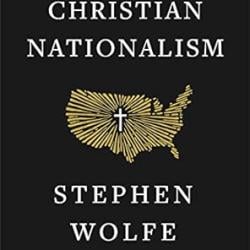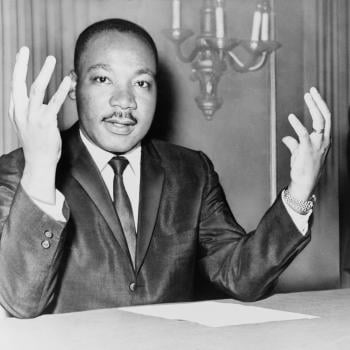A Newish American Church Phenomenon: INC (Independent Network Christianity)
I learned the name of this relatively new phenomenon via a review of the 2017 book The Rise of Network Christianity (OUP, 2017) by sociologists Brad Christerson and Richard Flory by James K. A. Smith. The review was published in the Los Angeles Review of Books and can be found at https://lareviewofbooks.org/article/how-to-find-god-on-youtube/. The review’s title is “How to Find God (on YouTube).” Christerson and Flory have given this phenomenon a name: “Independent Network Christianity” or “INC.”
*Sidebar: The opinions expressed here are my own (or those of the guest writer); I do not speak for any other person, group or organization; nor do I imply that the opinions expressed here reflect those of any other person, group or organization unless I say so specifically. Before commenting read the entire post and the “Note to commenters” at its end.*
I’ve been watching this phenomenon develop for years; what Christerson and Flory have done is describe it sociologically and give it a name. What Smith does in his review is critique the phenomenon theologically and politically. Here’s the “hook.” “[t]he volume offers insights into a religious mindset and posture that could partly explain the rise of a populism eagerly awaiting a strongman savior.” If that doesn’t grab your attention, I don’t know what would.
Here’s an irony that I can’t help mentioning. In 2006 Christian Century offered me the opportunity to write a kind of counterpoint article about Pentecostalism as many were celebrating the alleged centennial of the birth of the movement. (Reference the Azusa Street Revival of 1906. I say “alleged” because exactly when the modern Pentecostal movement was born is unclear. When I attended a Pentecostal college and took a course in Pentecostal history the birth year given was 1901! But I won’t go into all the reasons that history has been revised.)
Back to the irony. My article was entitled “The Dark Side of Pentecostalism” and some of the “dark side” I wrote about is reflected in Smith’s critique of this newish “brand of post-Pentecostalism” (viz., “INC”). Now, I will let you compare the two articles (my 2006 article and Smith’s book review) and decide for yourself how much they coincide and overlap—in terms of critique. I see a lot in common. And yet, in 2006 Smith wrote a biting letter to the editor of CC criticizing me for tarring the whole Pentecostal movement with the same (negative) brush—without providing specifics. My thought then was, if Pentecostalism doesn’t deserve these criticisms, why did you leave it? I think both my critique and Smith’s (of INC) were and are fair.
So what is INC? According to Smith, according to Christerson and Flory, “a defining feature of INC Christianity is not a shared dogma or common affirmation of faith, but rather the relational currency of loyalty, allegiance, and identification.”
Smith’s critique of INC: “[i]t’s hard not to sense here some kind of arrested development, a spiritualization of irresponsibility.”
Now if you’re wondering exactly WHO compose(d) INC, Smith provides some names: Chuck Smith and Calvary Chapels (the beginning of the phenomenon), John Wimber and Vineyard, C. Peter Wagner and the whole New Apostolic Reformation movement. These are the roots of the phenomenon. Among today’s best-known representatives, Smith says, are Ché Ahn’s Harvest International Ministry, Bill Johnson’s Bethel Church in Redding, California, Mike Bickle’s International House of Prayer and others. (I have to wonder why these men and their ministries are singled out when others—mostly Calvinists—could fit the structural profile of INC just as well!)
As I said, I’ve been watching this phenomenon develop for years. I’ve had a lively and strong interest in denominations and church networks as evidenced in my most recent publication—Abingdon Press’s Handbook of Denominations in the United States (2017). In fact, I included some of these INC networks in it because they are, in my estimation, just as much denominations as many traditional denominations like Churches of Christ (no headquarters).
I would like to make clear here and now that I do not necessarily agree that all of Smith’s criticisms of the named individuals or their organizations are justified; I’m merely reporting here what he says. On the other hand, I, too, like Smith, have some concerns about any and all radically independent, entrepreneurial religious movements with seemingly (!) unaccountable leadership and “members” who “connect” only via electronic media. Whether these characteristics fit any of the named persons or their organizations is up for debate.
It seems to me that “congregations” (whatever they may call themselves) as well as multiple thousands, perhaps millions of individuals, that are INC-identifiable, exist in virtually every city of any size in America. I have “spotted them” everywhere I go. As Christerson and Flory and Smith note, this phenomenon is almost completely “off the radar” of the news media and religious researchers. The INC phenomenon has become so thin in terms of organizational visibility—unless you know where to look on the world wide web—that many people who should know about it and report on it are missing it almost entirely.
I have two minor critiques of Smith’s review article and, by extension, apparently, of Christerson’s and Flory’s book (which I have not yet read).
First, what they identify as “INC” is really not that new. I grew up “in the thick” of American Pentecostalism and always knew of independent Pentecostal (and other) Christian networks led by totally independent “evangelists” who were maverick and entrepreneurial—absolutely outside the authority or oversight of any established denomination. These evangelists often had followings—people who listened to them on the radio and/or watched them on television and traveled far to attend their revivals. I clearly remember people all over the U.S. who practically worshiped “Brother Branham” or “A. A. Allen” or another Pentecostal evangelist. There still exist today a network of churches that considers William Branham an “end time prophet” and who perpetuate his memory and teachings.
Second, as I mentioned before, any description of INC ought to include Calvinist networks and their entrepreneurial preachers, podcasters, writers, and speakers. All over America there are very large week-night “Bible studies” or “gatherings” with one word names led by independent “Reformed” (mostly “Bible church” trained) evangelist-speakers who have no formal theological training but were mentored by one or more of the well-known, famous, household-name Calvinist pastor-teachers. Perhaps Smith and the book’s authors would argue that this iteration of INC doesn’t fit their profile because it has a confessional element (Calvinism) missing in the others. However, what they call “post-Pentecostalism” also has some common beliefs such as continuationism—the idea that all of the supernatural gifts of the Spirit and miracles (etc.) are still meant by God to be evident in churches today.
I will suggest that there are two primary iterations of what these authors and Smith label “INC.” The first is the one on which they focus—what before was called “Third Wave” (they call them “post-Pentecostal”) evangelists and teachers and their followers. The second is the one that seems neglected (although I will have to read the book to find out for sure)—the plethora of independent new Calvinist youth-oriented evangelists and teachers and their followers.
According to Smith (and I assume the authors whose book he reviews), a common factor of INC is religious populism. Of course, church historian Nathan Hatch wrote about this phenomenon in The Democratization of American Christianity in 1989. This descriptive phrase points to the apparent fact that millions of American Christians simply choose to follow a charismatic religious teacher, evangelist, pastor, regardless of his or her bona fides (education, credentials, orthodoxy, etc.). What attracts people to them is their charisma and (often implicit) promise of a better life by following them.
But doesn’t this sound familiar—to any of us who’ve been around in American evangelical Christianity for many years? Do I need to mention Bill Gothard in the 1970s and 1980s? Oral Roberts in the 1950s through the 1970s (at least)? Kenneth Hagin in the 1960s through the 1990s? T. D. Jakes now?
The only thing that seems really new about INC is the technology used. Again, however, many of us will remember the phenomenon of fax machine networking in the 1980s. If you signed up with an independent evangelist or teacher who lived far from you, you could “attend” his or her meetings by fax. If you had a fax machine, you could receive weekly or even daily faxes—quicker than surface mail. Longer than Twitter, but not really all that different.
I’m not sure why Smith’s critique of INC doesn’t equally apply to a long line of entrepreneurial evangelical evangelists and teachers going back at least through my lifetime—beginning in the 1950s. It seems to be just a new iteration of something much older. I share most of his concerns, though. I just wish he had acknowledged the truth of my concerns in 2006 rather than blasting (that’s how it felt to me) me in a letter to CC’s editor.
*Note to commenters: This blog is not a discussion board; please respond with a question or comment only to me. If you do not share my evangelical Christian perspective (very broadly defined), feel free to ask a question for clarification, but know that this is not a space for debating incommensurate perspectives/worldviews. In any case, know that there is no guarantee that your question or comment will be posted by the moderator or answered by the writer. If you hope for your question or comment to appear here and be answered or responded to, make sure it is civil, respectful, and “on topic.” Do not comment if you have not read the entire post and do not misrepresent what it says. Keep any comment (including questions) to minimal length; do not post essays, sermons or testimonies here. Do not post links to internet sites here. This is a space for expressions of the blogger’s (or guest writers’) opinions and constructive dialogue among evangelical Christians (very broadly defined).













